There are a variety of coin rarities in the British currency, particularly during the Medieval Ages. Learn about the Rare old British coins in the coin market, English coin rarities online
While there may be plenty of rare old British coins, not many of them are valuable in terms of market price.
Examples of expensive and famous rare UK coins are the Florin, Rose Ryal, and the British fifty shillings. The 1933 British penny, on the other hand, is famed as the great British numismatic rarity of the 20th century.
The following is a rare coins list featuring the English rarities earlier mentioned plus more.
Crown of the Rose
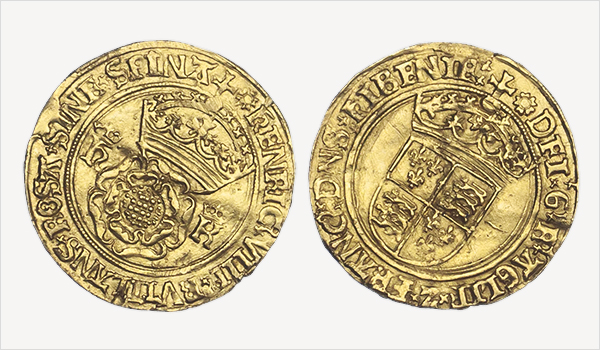
An extremely rare old British gold coin is the Crown of the Rose first introduced in 1526 during the rule of Henry VIII. This early English coin was valued at four shillings (a unit of currency in Britain) weighing 3.5 grams.
The Crown of the Rose was minted in the attempt of Henry VIII to compete with the then famous ecu au soleil French gold currency. In addition, English gold coins were also finding their way to the Continent and outside the territories of England causing a shortage in coins. To address the problem, the king ordered to produce coins with lighter weight and lower gold standard (than of other countries) to prevent it from being used in outside trades.
The minting of the Crown of the Rose gold coin was not a success. Within a few months in circulation, it was replaced by the Crown of the Double-Rose which became very popular during its time.
Rose Ryal: Rare British coins
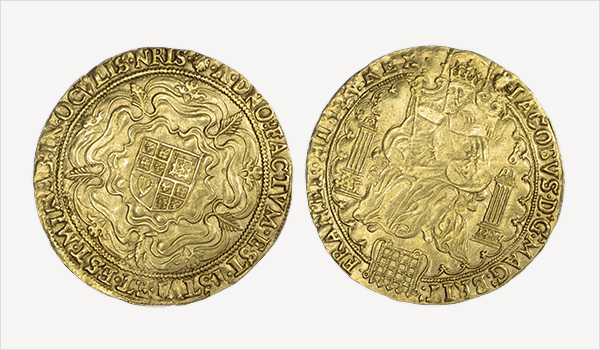
The Rose Ryal is another British coin rarity. This gold coin was issued during the reign of King James I and was circulated between 1604 and 1625. There are two main designs of the Rose Ryal, the first coinage bears a small shield over a Tudor Rose on the reverse and on the obverse shows the enthroned king with a portcullis (castle gate) beneath. It had the inscription that meant “James by the grace of God King of Great Britain France and Ireland”.
In the second coinage, Rose Ryal reverse side featured a larger shield with the legend XXX above it and by the rim are roses, lions, and lis. The obverse was a similar version of the first coinage.
In early 2009, a James I Rose Ryal graded by Numismatic Guaranty at AU-55 had a coin price guide value of $18,000 to $22,000.
British fifty shillings coin
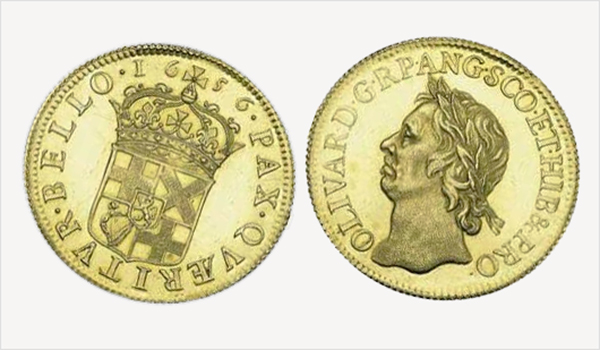
Another very rare English coin is the gold British Fifty Shillings which had only been minted once. It is believed to have not entered circulation and was only a coin pattern to test dies. Researches also state that the fifty shillings were minted together with the Broad coins, forerunner of the gold coin Guinea.
The obverse of the fifty-shilling coin features English political leader Oliver Cromwell with the legend that says OLIVAR D G R P ANG SCO HIB &c PRO which means “Oliver, by the grace of God Protector of the Republic of England, Scotland, Ireland, etc”.
On the reverse side is a crowned shield that bears the England Commonwealth arms with the legend PAX QVAERITUR BELLO 1656 that literally means “Peace is sought through war”. The edge of the gold coin has the inscription that means “A protector of the letters, the letters are a garland and a safeguard of the coinage”.
Only eleven specimens of the British Fifty shillings are known to exist that they belong to the list of rarest British coins. The British fifty shilling coin prices may reach about £15,000 to £20,000.
English Farthings coins
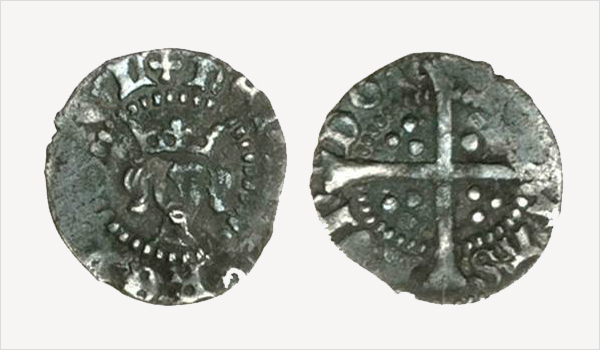
Farthings are English coins first introduced in the Medieval Period. They were worth one quarter of a penny and 1/960 of a pound sterling (the British currency). First British farthings were in circulation from around the 13th century until the 1960s.
Most of the farthings produced are very rare today. The early silver farthings, for example, were too small that they were not easily stored. Because of their size too, they are not easily detected by most coin metal detectors.
As the smallest denomination, the silver farthing coin were useful to common people but were hardly used by the wealthy and powerful. While there were small sizes of farthings, there were also some larger issues. The latter, however, were not often used by the public as they contain low fineness of silver. People would prefer smaller coins with finer silver than the bigger issues of low silver standard.
Exceptional rarities are Richard III farthings and Henry V Calais farthings but are not very valuable in terms of market price.
Rare British coins Florin
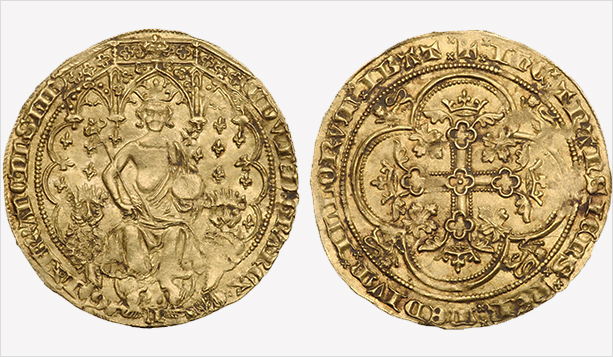
In attempting to add a gold coin in the English currency to help with international trade, the English parliament petitioned King Edward III for the innovation of British coinage. Thus, in 1344, the first gold coin of British coin history was produced. It was named Florin which is derived from the then popular gold coins from Florence, Italy.
Also referred to as the Double Leopard, the coin features on the obverse the king seated on the throne, holding an orb and a scepter, with two heraldic leopards beside him. On the reverse side is the Royal Cross within a quatrefoil (a symbol of a flower with four petals used in the royal coat of arms) with a leopard in each space between the arches of the “flower petal”.
The face value of the coin was much higher than the value of its gold content that merchants would often refuse to use the Florin in trade. With only few months in circulation, the first English gold coin was replaced with the coin called Noble.
The British gold Florin is among the classic numismatic rarities with only three examples known to exist at present. A specimen of this rare gold coin was sold for £460,000 at a 2006 auction.
Spur Royal or Spur Ryal
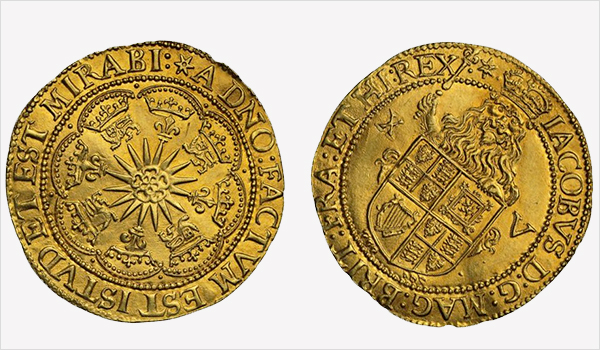
An exceedingly rare English gold coin is the Spur Ryal or Spur Royal, first issued during the reign of King James I. It was an improved version of the Rose Noble coinage by Kings Edward IV and Henry VII.
This British coin rarity got its name from its first issue reverse side design – the image of the sun and a rose that resemble a spur or a spiked wheel. Other icons found on the reverse were a lion and a crown surrounded by the legend that means “This is the Lord’s doing and it is marvelous”.
The obverse bears the image of the king in a ship, holding a sword and shield. The inscription reads IACOBUS DG MAG BRIT FRANT ET HIB REX which means “James by the grace of God King of Great Britain”.
Rare 1933 British penny
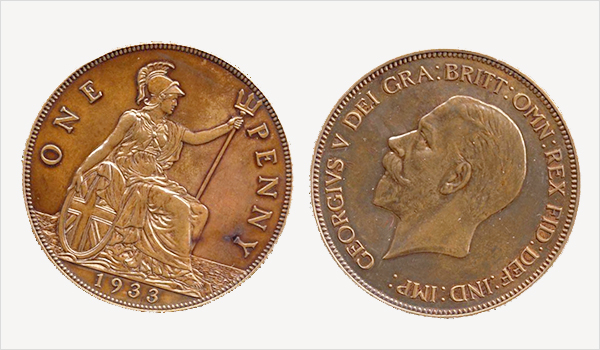
There were reportedly only seven 1933 British pennies minted, only six are known left to exist today, making it the great British numismatic rarity of the 20th century. Although there are quite a number of English coins known to be rare, the 1933 penny is one of the most famous rare gold coins in numismatics.
The British 1933 penny was never produced for circulation. In fact, because of the enough supply of pennies in 1933, there was no need to produce more. However, the mint received requests from the King to mint 1933 coins to be placed under the foundation stones of buildings erected in the said year.
True enough, three specimens were reported to had been placed under the foundation stones of the University of London Building in Bloomsbury, the Church of St. Cross, Middleton, and the St. Mary’s Chruch in Hawksworth.
The St. Cross Church specimen was stolen by thieves in 1970 and until now its whereabouts is still unknown.
Currently, one specimen of the 1933 British penny remains at the stone foundation of the University of London, two are housed at the British Museum and the Royal Mint Museum, and the three others are possessed by private collectors. The rare old British 1933 penny would be priced at least £40,000 today.





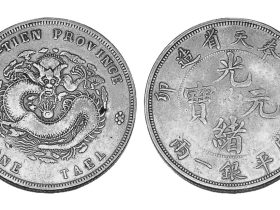
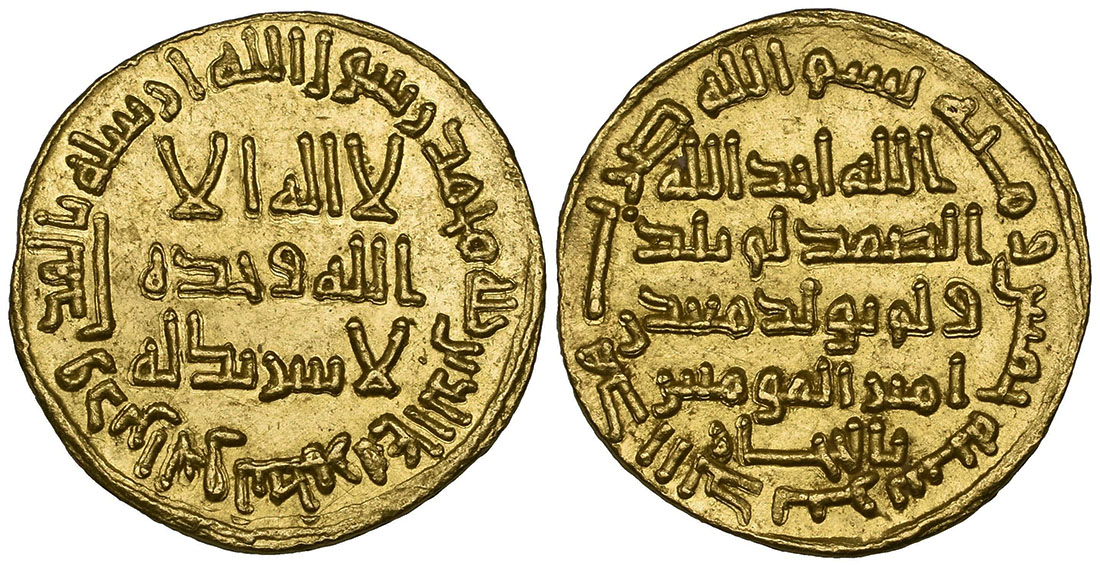

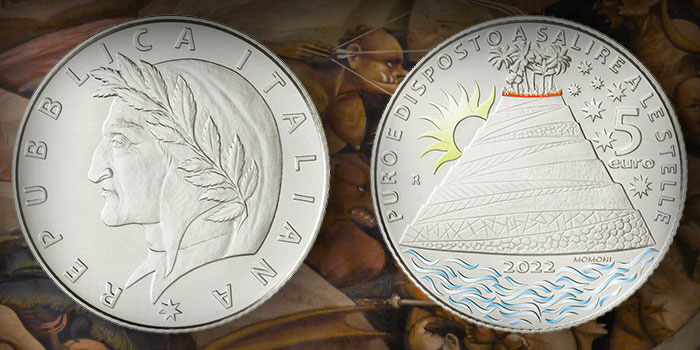

Leave a Reply